Main menu
Common skin conditions

NEWS
Join DermNet PRO
Read more
Quick links
Author: Hon A/Prof Amanda Oakley, Dermatologist, Hamilton, New Zealand, 2003.
A dermatophytide (ide or id) is an allergic rash caused by an inflammatory fungal infection (tinea) at a distant site.
The rash is usually itchy like dermatitis, with bumps or blisters scattered on face, trunk and/or limbs. Fungus cannot be cultured from an ide. The ide can be treated with topical steroid and will resolve once the original infection has been controlled.
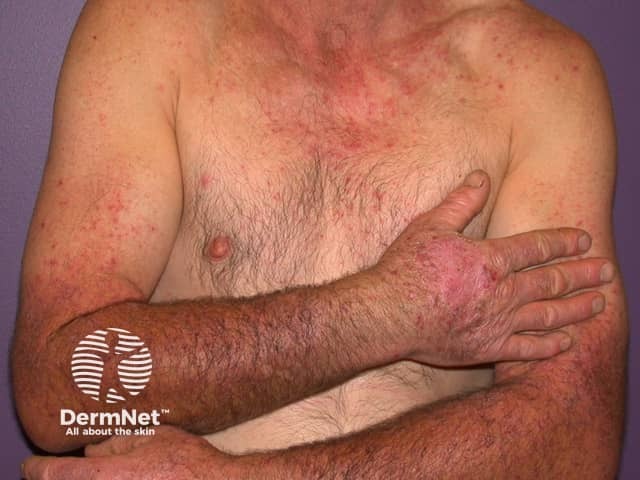
Case 1
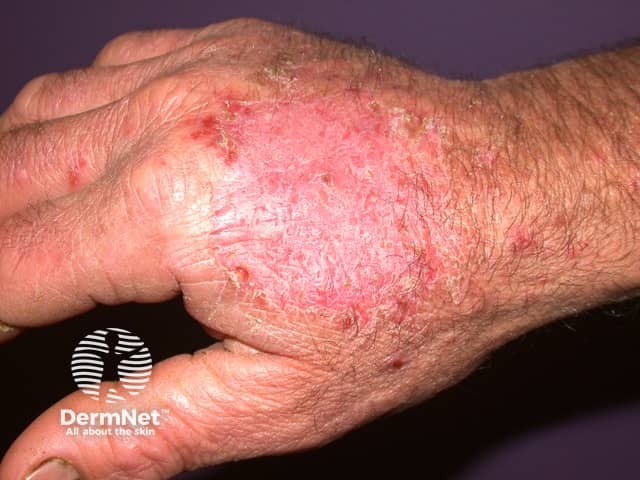
Primary zoophilic dermatophyte infection
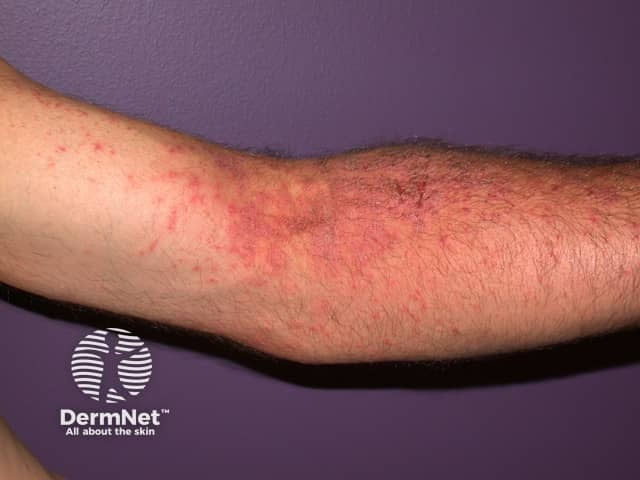
Crusted itchy papules
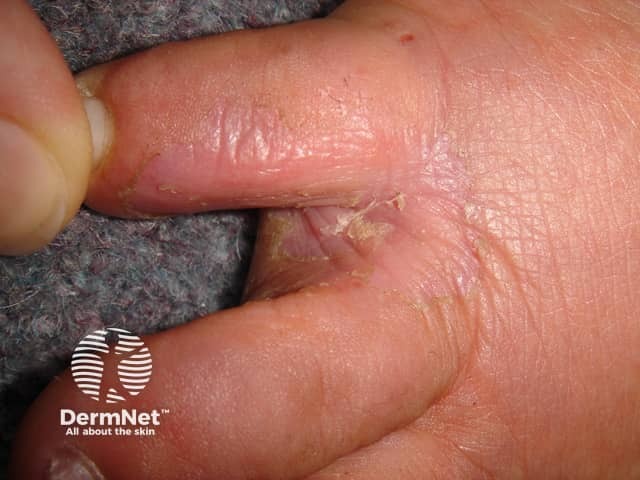
Case 2
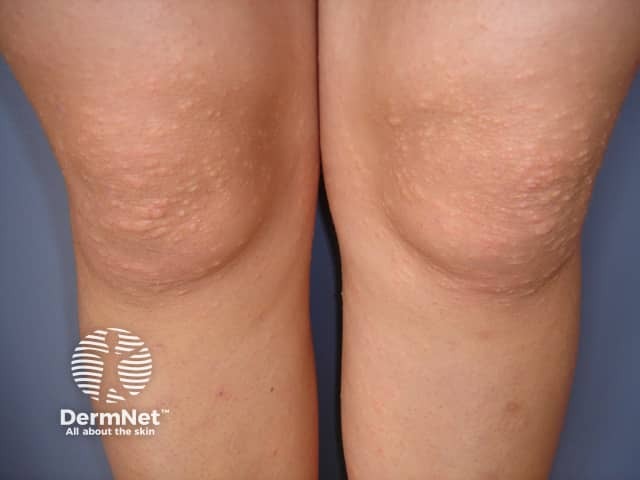
Clusters of papules on knees
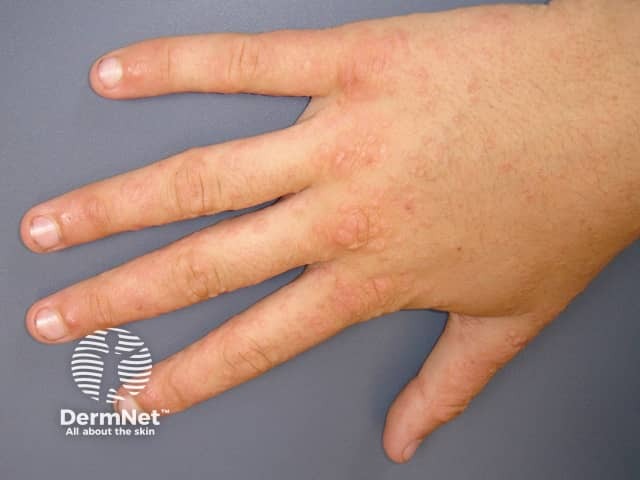
Pompholyx-like reaction
The diagnosis of a dermatophytide is made by the clinical presentation and confirmed by microscopy and culture of the primary skin infection.
The primary fungal infection usually requires an oral antifungal medication for control, but in mild cases a topical antifungal agent applied to the source of infection (e.g. to the athlete's foot) may be adequate.
The dermatophytide reaction is a type of eczematous dermatitis, and should be treated with topical steroids and emollients. Occasionally systemic steroids are required for a few weeks.